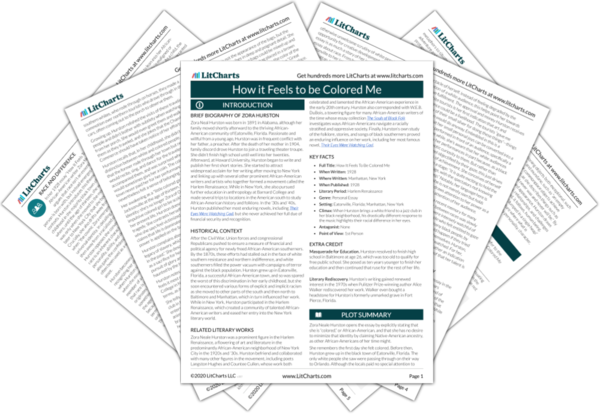The abstract figure of the white neighbor stands in for white America as a whole. Hurston uses him to illustrate her unique take on American racial history. She almost pities this figure as she describes his slow but certain decline, which coincides with the eventual advancement of black citizens. The white neighbor is burdened by guilt over the centuries-long crime of black slavery.
